Alba strawberry variety
Alba is a non-repairable variety of early ripening strawberries. It was bred in Cesena (Italy) by New Fruits specialists. The ancestor of our heroine is the famous Albionfrom which she inherited all the best characteristics. This strawberry is considered the best among the early ones, has gained immense popularity in many countries, is actively grown by large agricultural firms in Italy, as well as in Russia, Ukraine, Belarus. It is rightfully called one of the best and most promising varieties due to its high yield, excellent presentation of berries and their excellent taste. Alba is very much appreciated among gardeners, however, it has rather ambiguous and often contradictory reviews.
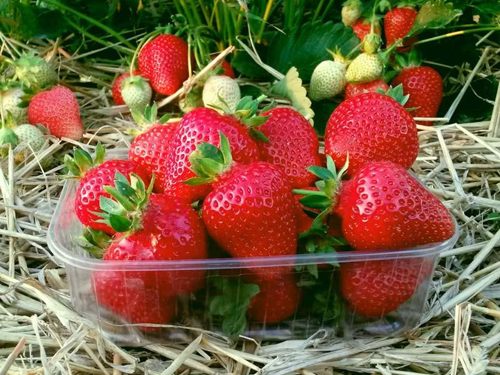
The plant is vigorous, vigorous, up to 35 cm high, medium foliage, in general, the bush looks rather compact. Whiskers are formed in medium to small amounts. The leaves are large, bright green in color. Peduncles are long, strong, located at the level of leaves, and are laid on the ground under the weight of the harvest.
Strawberries have large, elongated-conical, regular berries. The uniformity of the fruits is one of the main outstanding features of Alba: the berries are uniform in size and weight, as if they were picked. The skin of the fruit is bright red, shiny. Achenes are yellow, immersed in the pulp to a medium depth. The flesh is red, juicy, dense, but without apple crunch when bitten, which is the sin of the “ancestor” of our heroine Albion. The aroma of the pulp is strawberry, moderately pronounced.

You can talk about the taste of the variety for a very long time - the opinions of gardeners differ radically. So, someone praises the taste of berries very much, while someone calls it foam or plastic. Still, if we single out the “golden mean” among this multi-colored palette of reviews, we can say the following - our heroine's taste is normal. Not outstanding, but not bad either - regular strawberries. And often gardeners are dissatisfied with the fact that it is "ordinary". Well, as they say, tastes differ. However, it should be said that the variety has the rank of "commercial", and its taste is enough for the market, and gardeners, of course, want more. Actually, the taste of the pulp itself is sweet, with hints of sourness, medium saturation. At the stage of technical ripeness, the berries can be overly sour. When fully ripe, sweetness predominates, but the pulp is not very sweet.

What gardeners and farmers do not argue about is the excellent transportability of Alba berries and their excellent presentation. They are easily separated from the stalk, remain dry and beautiful. As already mentioned, the fruits of the variety are very uniform, due to which they attract attention on the market - even, neat berries, without flaws, one to one, bright and shiny. Strawberries are versatile in use, good fresh and great for processing. The fruits are also suitable for freezing, while they will not lose their shape and when thawed will not turn into "porridge".

The average weight of Alba berries is 25-30 grams, fruiting is stable, the fruits do not shrink after the first harvest, only by the end of the season they slightly decrease in size. At the first collection, specimens weighing about 50 grams or more are not uncommon. The yield declared by the originator is up to 1.2 kg of berries per plant. In reality, this figure is much less - from 300 to 700 grams per bush with a planting density of 60 thousand plants per hectare. It should be noted that the yield of strawberries depends to a large extent on agricultural techniques and the intensity of cultivation. In the open field, it turns out to collect 200-260 kg / ha, in the closed field, the indicators can increase significantly.

Alba ripens early, a few days later Honey... Flowering occurs later than other varieties, but the period of fruit formation in our heroine is shorter in comparison with other varieties.The beginning of fruiting, when grown in the open field, falls on mid-May (in the southern regions), or at the end of May (in central Russia). Indoors it starts much earlier - in early to mid-April.
The variety is resistant to root rot, powdery mildew, various spots, but susceptible to anthracnose. The plants have good winter hardiness, they hibernate without problems with shelter. The drought tolerance of strawberries is also good, but the lack of moisture has a negative effect on the taste of the berries, which are not particularly popular anyway. Plants tolerate heat quite calmly, but berries can be baked in the sun.

In terms of care, the variety is, in principle, unpretentious, but it belongs to the intensive type - the more effort you put into growing it, the better the yield you will get. Thus, in order to fully unleash the potential of Alba and not be disappointed in her, it is extremely important to take a responsible attitude to agricultural technology. Let's look at the main points of growing and caring in the list below.
- It is more expedient to plant seedlings in July-August - in this case, the yield will be higher than when planting in autumn. Plants are planted according to the scheme: 20-25 cm between bushes, 35-50 between rows. If there is enough free space, the following scheme will be optimal: 35-40 × 50-70 cm. The second case is preferable, since Alba will feel more comfortable, the root system of plants will not suffer from a lack of nutrition.
- Do not neglect standard agricultural practices - weeding, loosening the soil, preventive treatments for diseases and pests. It is also necessary to monitor soil moisture, the best solution is to install a drip irrigation system. As already mentioned, the taste of strawberries depends on the amount of moisture, so you should not neglect regular watering.
- As for dressings, they are applied in the required quantities, based on the technology and intensity of cultivation. The more abundant the nutrition, the greater the yield of the variety will be. However, this does not mean that the plants need to be over-fed. It is enough to apply two to four times fertilization per season; foliar dressing also makes sense, since Alba's fruit formation is quite intense. At the beginning of the growing season, it is recommended to introduce a complex of NPK (nitrogen, phosphorus, potassium) with a dominant proportion of nitrogen, so that the aboveground part of the plant grows more actively. During flowering and fruiting, minerals are more needed - potassium, phosphorus, iron, manganese and boron. There is a use of complex fertilizers, this is especially true for those who have no time to make up their own "recipes".
- Strawberry whiskers form a little, but they must be removed if you want to get the best yield. It is advisable to separate the plantings: on the mother garden, the plants are not allowed to bear fruit, on the "fruitful" bed - they are not allowed to form a mustache.
- Rejuvenate the plantation in a timely manner. In general, experts recommend not keeping Alba for more than one year. In this case, maximum production efficiency is achieved. If we are not talking about commercial cultivation, then you will still have to update the plantings often - once every two years. Someone delays with this event, and then complains about the poor yield and the lack of taste in the berries. In addition, if the plantation is not rejuvenated in a timely manner, the risk of infection of plants with various diseases increases.
Let's briefly summarize. It is not without reason that this variety is one of the favorites among the early varieties of strawberries. It is high-yielding, has beautiful large berries, and ripens on a par with other "giants" of the strawberry market. But it also has many disadvantages. Like his "father" Albion, he demands sufficient attention in exchange for good results.And breeders are not asleep, and at the present time many different varieties have already been created that do not require too abundant "feeding", but at the same time consistently give very large yields. And they often surpass our heroine in taste. In a word, the competition is very strong, but Alba still remains very popular. It is especially good for growing for commercial purposes, but not so attractive for a simple gardener. Of course, on your personal plot you want to have something tastier and more interesting. All in all, these strawberries are a stable workhorse, and if you are more interested in quantity than taste, then they are an excellent choice.
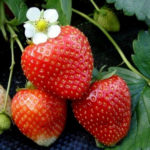
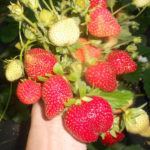
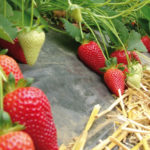
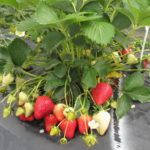
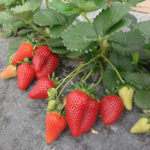
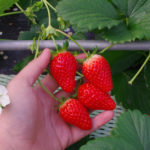



I bought it last fall. All the planted bushes survived the winter, there was no frost. This was the first harvest in the current growing season. Alba was not particularly impressed. I have several varieties in the strawberry beds and these bushes were the first to bloom. Others were just beginning to flourish, and these already had large green strawberries. I hoped that ripe berries would come sooner. But they ripened just a week earlier than Marmalade. Pleasant to the taste, aromatic, size is above average. Summer was very hot, several times late with watering strawberries. Alba tolerated the lack of moisture in the soil perfectly, released many tendrils.